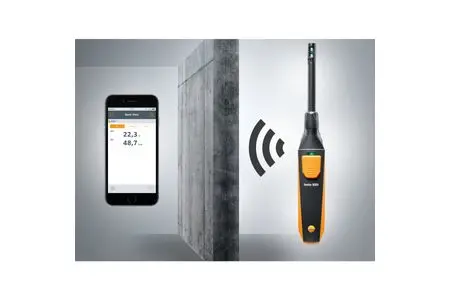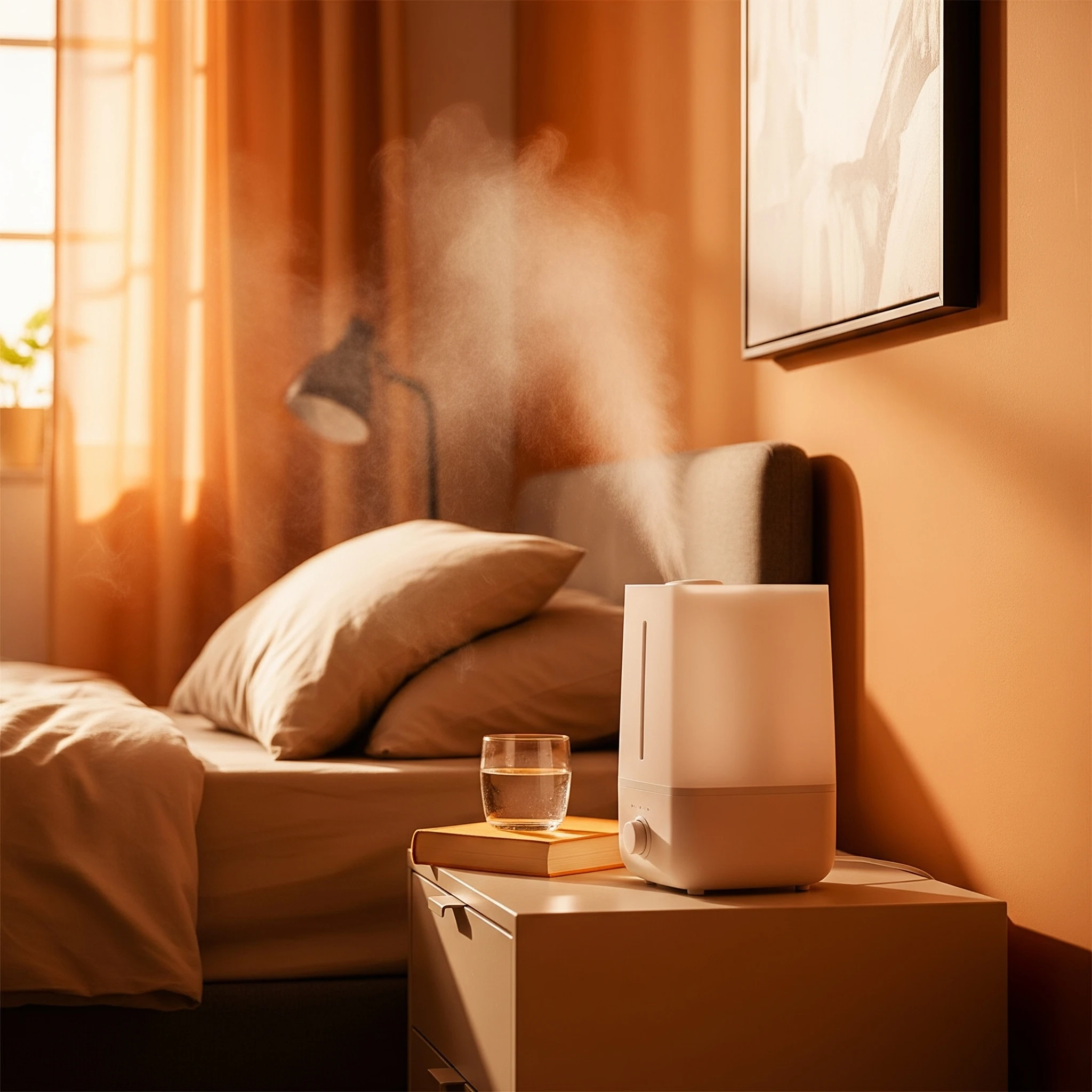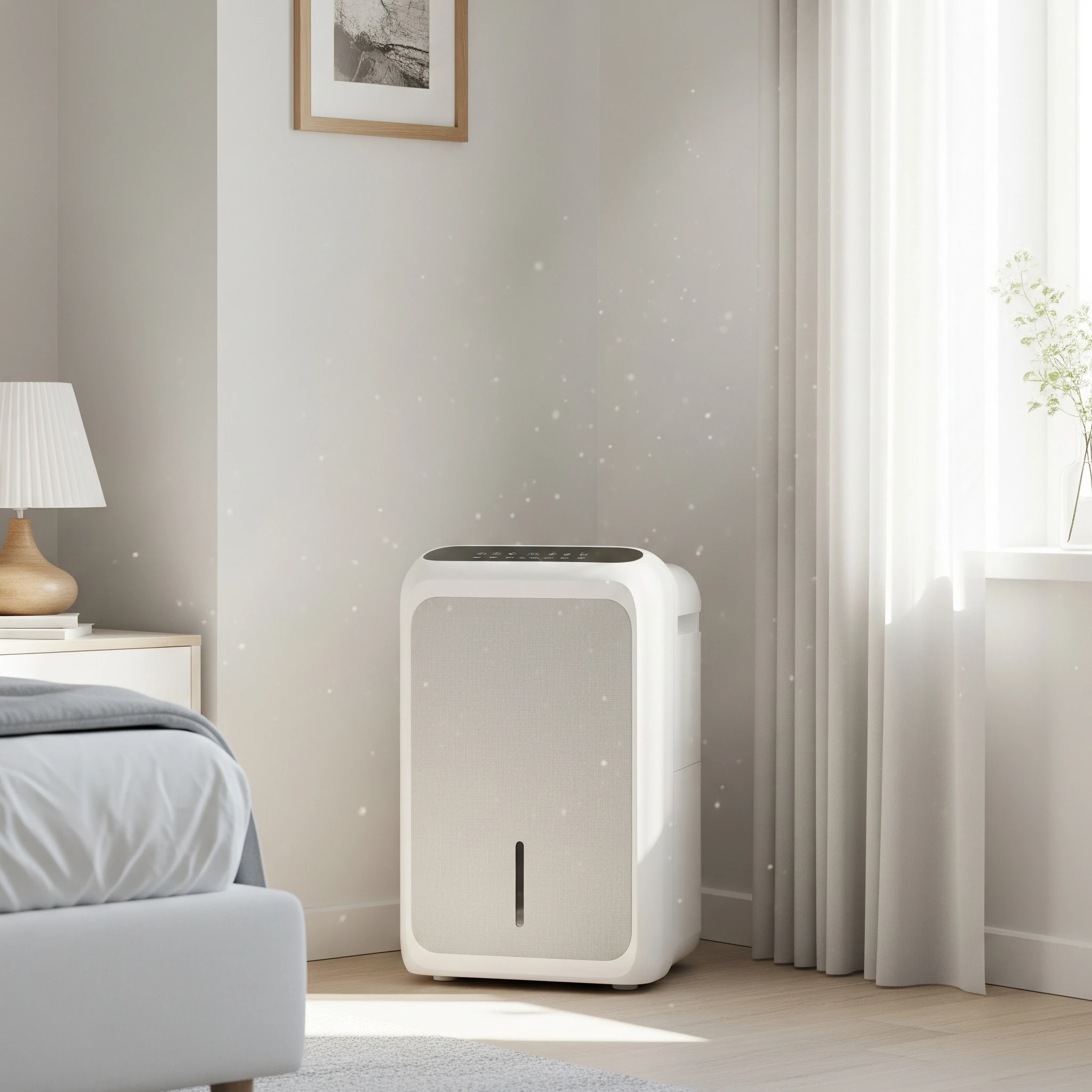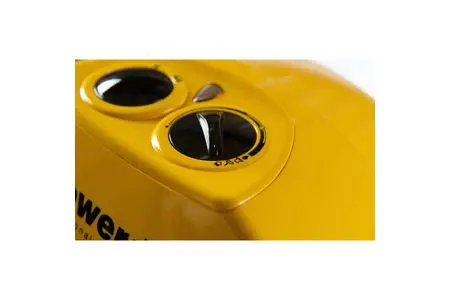Both dehumidifiers and humidifiers play important roles in maintaining a healthy indoor environment. While both aim to adjust the humidity levels in your home, they do so in opposite ways and address different problems. And it’s this difference that homeowners need to be aware of before purchasing either one.
City Plumbing helps by removing the confusion about whether you need a dehumidifier or a humidifier for your home. Here we explore the differences between these two devices and help you determine which one is best suited for your needs.
What Is the Main Difference Between a Dehumidifier and a Humidifier?
- Humidifiers: Add moisture to the air. You need a humidifier when the air in your home is too dry.
- Dehumidifiers: Remove moisture from the air. You need a dehumidifier when the air in your home is too humid.
The ideal indoor humidity level for most homes is generally between 30% and 60% relative humidity (RH). You can measure your home's humidity with a hygrometer, an inexpensive tool that helps you maintain a balanced humidity level throughout.

What Is a Humidifier?
A humidifier adds moisture to the air, which can be beneficial during the winter months when indoor air tends to become dry due to heating systems. Dry air can cause skin irritations, dry throat, and other discomforts. A humidifier can alleviate these symptoms and create a more pleasant atmosphere in your home.
When to Use a Humidifier (For Low Humidity, Typically Below 30% RH)
- Symptoms of dry air:
Dry skin, chapped lips / Irritated nasal passages, sore throat / Nosebleeds / Dry cough, exacerbated cold/flu symptoms, and respiratory issues like asthma or bronchitis / Static electricity
- Impact on your home:
Cracking or shrinking of wooden furniture, floors, musical instruments, and picture frames / Drying out of plants.
- Common seasons/situations:
Winter: Heating systems can significantly dry out indoor air / Dry climates.

What Is a Dehumidifier?
A dehumidifier is designed to reduce the humidity levels in your home. High humidity can lead to damp, mould growth, dust mites, and other allergens that have adverse effects on your health. By removing excess moisture from the air, a dehumidifier can help prevent these issues and create a more comfortable living environment.
When to Use a Dehumidifier (For High Humidity, Typically Above 60% RH)
- Symptoms of high humidity:
Damp, clammy feeling in the air/ Difficulty breathing, especially for those with allergies or asthma / Fatigue, muscle cramps.
- Impact on your home:
Musty odours (a key sign of mould/mildew) /Mould or mildew growth on walls, ceilings, upholstery, or clothes / Condensation on windows, pipes, or other cool surfaces / Peeling paint or wallpaper / Damage to wooden structures due to swelling or warping / Increased dust mites and other allergens / Pest problems (cockroaches, silverfish, moths thrive in humid environments)
- Common seasons/situations:
Summer: Warm, humid outdoor air entering your home / Basements, crawl spaces, bathrooms, laundry rooms, or any area prone to dampness / After a leak or minor flooding / In the UK, where damp conditions are common, a dehumidifier is often more generally useful.

When to Use a Dehumidifier and Humdidifer
When to Use a Humidifier (Adds Moisture)
Use a humidifier when the air is too dry, typically when the RH is below 30-40%. This often occurs in winter when heating systems dry the air.
Low Humidity (Below 30-40% RH)
- Symptoms in People:
- Dry skin and chapped lips.
- Irritated throat and sinuses.
- Dry cough and nosebleeds.
- Exacerbated cold and flu symptoms.
- Impact on Home:
- Static electricity.
- Cracking or shrinking of wood floors, furniture, and musical instruments.
- Houseplants wilting or drying out.
---------------------------------------------------------------
When to Use a Dehumidifier(Removes Moisture)
Use a dehumidifier when the air is too humid, usually if RH is above 50-60%. This is common in areas with high humidity, such as basements or laundry rooms.
High Humidity (Above 50-60% RH)
- Symptoms in People:
- Damp, clammy feeling in the air.
- Musty odors.
- Increased allergy and asthma flare-ups (due to mold and dust mites).
- Difficulty breathing.
- Impact on Home:
- Condensation on windows and cold surfaces.
- Mould and mildew growth on walls, ceilings, and clothes.
- Peeling paint or wallpaper.
- Warping or rot of wood structures.
- Increased dust mites and pests.
Which One Should You Choose - A Humidifier or a Dehumidifier?
The simplest way to determine which appliance you need is to measure your home's humidity with a hygrometer and observe the signs in your home and your personal comfort.
- Measure Humidity: Use a hygrometer (often with a thermometer) to get an accurate RH reading. This is essential.
2. Compare to the Ideal Range:
- If your RH is consistently below 30-40%, you need a humidifier.
- If your RH is consistently above 50-60%, you need a dehumidifier.
- If it's within the ideal range (e.g., 40-50%), you may not need either device or may only use one intermittently for comfort.
3. Consider the season and climate: In many regions, people need a humidifier in the dry, heated winter months, while a dehumidifier is useful in the humid summer.
Maintaining the right humidity level supports comfort and health, while also protecting your home from damage caused by dryness or dampness.
Crucial Takeaway: The ideal RH level for comfort, health, and home preservation is generally between 40% and 60%. You need a hygrometer to measure your RH and choose the correct appliance.
(Note: It's generally not recommended to use both in the same area at the same time, as they counteract each other's effects. Focus on bringing your home's humidity to the optimal range (30-60%) for comfort and health.)
How Much Does It Cost to Run a Dehumidifier and a Humidifier (UK) ?
Dehumidifier Estimated Running Costs (UK)
Dehumidifiers generally cost more per hour but can offset costs, such as heating, and are particularly valuable in the UK's damp climate.
- Energy Efficient Compressor (10-12L):
Average Wattage: 150W – 250W
Estimated Cost Per Hour: 4p – 6.5p
Estimated Cost Per Day (8 Hours): 32p – 52p
- Standard Compressor (20L):
Average Wattage: 300W – 450W
Estimated Cost Per Hour: 7.5p – 12p
Estimated Cost Per Day (8 Hours): 60p – 96p
- Desiccant (Best for cold environments):
Average Wattage: 300W – 700W
Estimated Cost Per Hour: 8p – 18p
Estimated Cost Per Day (8 Hours): 64p – £1.44
Calculations based on a typical UK electricity tariff of 26p per kWh (as of late 2024/early 2025 energy price cap/guarantee rates). Actual costs will vary with your specific unit and tariff.
Key Benefits
- Drying Laundry Indoors: A dehumidifier is significantly cheaper to run than a typical tumble dryer. Using a dehumidifier to dry clothes indoors costs around 70p for a 6-hour cycle, compared to £1.50–£2.50+ for a single tumble dryer cycle. This represents a significant saving for many UK households, particularly during winter.
- Reduced Heating Costs: Drier air is scientifically proven to be easier and cheaper to heat than damp air. By keeping humidity below 60%, you may feel warmer and be able to turn your thermostat down slightly, offsetting the dehumidifier's running cost.
- Mould and Damp Prevention: This is the primary long-term benefit. Preventing condensation, black mould, and structural dampness protects the value and integrity of your home, saving potentially hundreds or thousands of pounds on future repair and cleaning bills.
----------------------------------------------------------------
Humidifier: Estimated Running Costs (UK)
Humidifiers, especially evaporative or ultrasonic models, are cheap to run as they require less energy than dehumidifiers.
- Ultrasonic / Evaporative (Cool Mist):
Average Wattage: 30W – 50W
Estimated Cost Per Hour: Under 1p – 1.3p
Estimated Cost Per Day (8 Hours): 8p – 10.5p
- Warm Mist / Steam:
Average Wattage: 100W – 400W
Estimated Cost Per Hour: 2.6p – 10.5p
Estimated Cost Per Day (8 Hours): 21p – 84p
Warm mist humidifiers boil water, which uses considerably more energy than cool mist models.
Key Benefits
- Relief from Winter Dryness: Provides relief from physical symptoms caused by dry winter air (low RH) and central heating, such as dry skin, chapped lips, irritated sinuses, and dry throats.
- Reduced Risk of Illness: Maintaining humidity between 40-60% can reduce the lifespan and transmission of certain airborne viruses (like flu), potentially leading to fewer sick days.
- Protection of Home Assets: Prevents damage to humidity-sensitive items, such as wooden floors, furniture, plaster, and musical instruments, from cracking or warping due to excessive dryness.
Buy Dehumidifiers At City Plumbing
City Plumbing offers a reputable selection of dehumidifiers to help you set your home's humidity levels and manage them with ease throughout the year.
With our selection of EBAC models promoting the latest innovative technology, our smart control dehumidifiers can adapt to your home and automatically adjust performance when humidity levels increase.
Check out our range of dehumidifiers today to get started on proactively preventing and solving condensation, damp and mould problems in your home.
If you’re looking for helpful advice and suggestions on choosing the best products for your home, take a further look at our City Plumbing website for more information.




